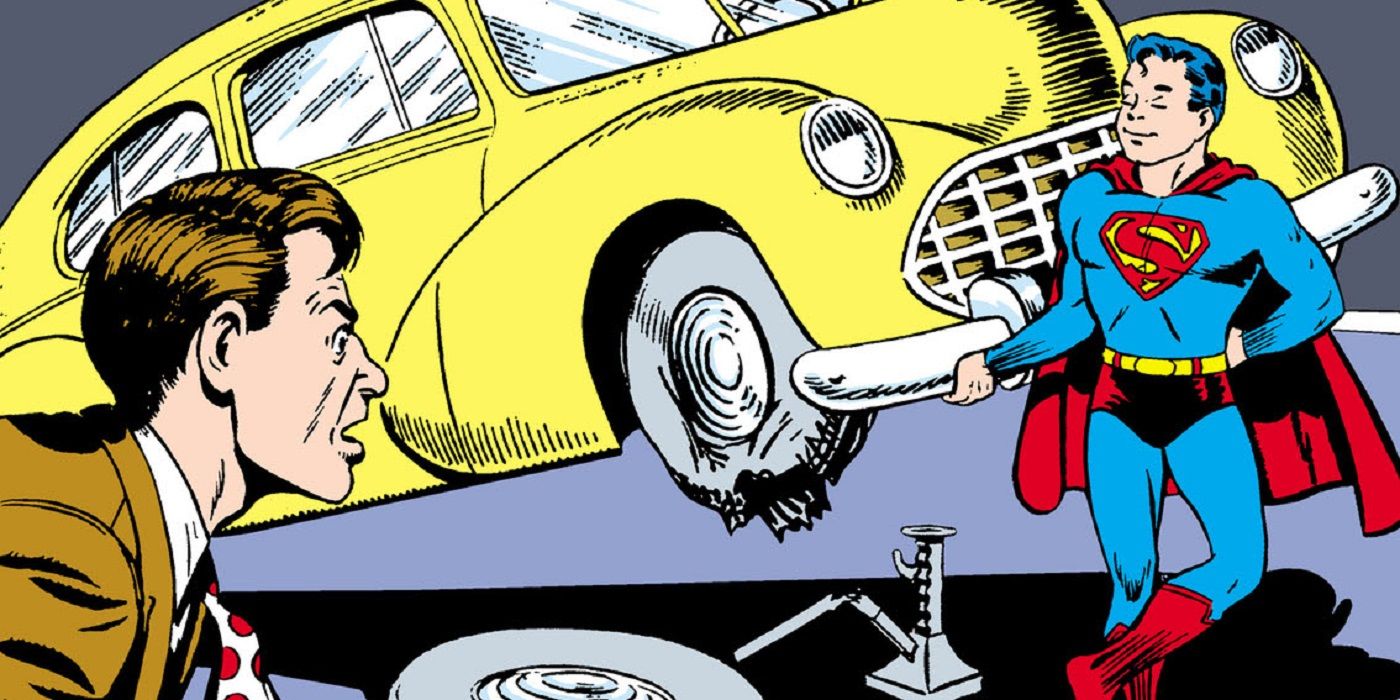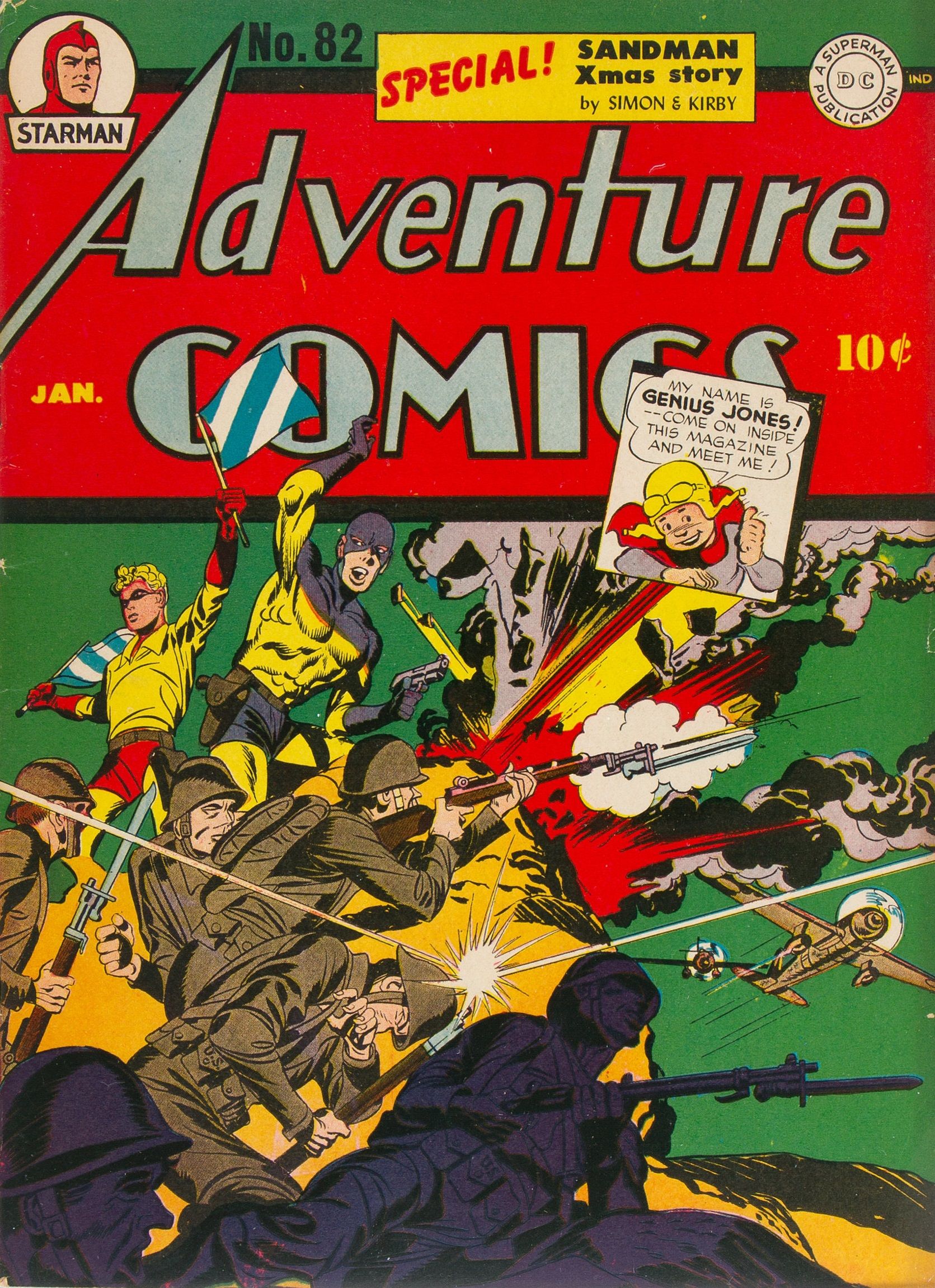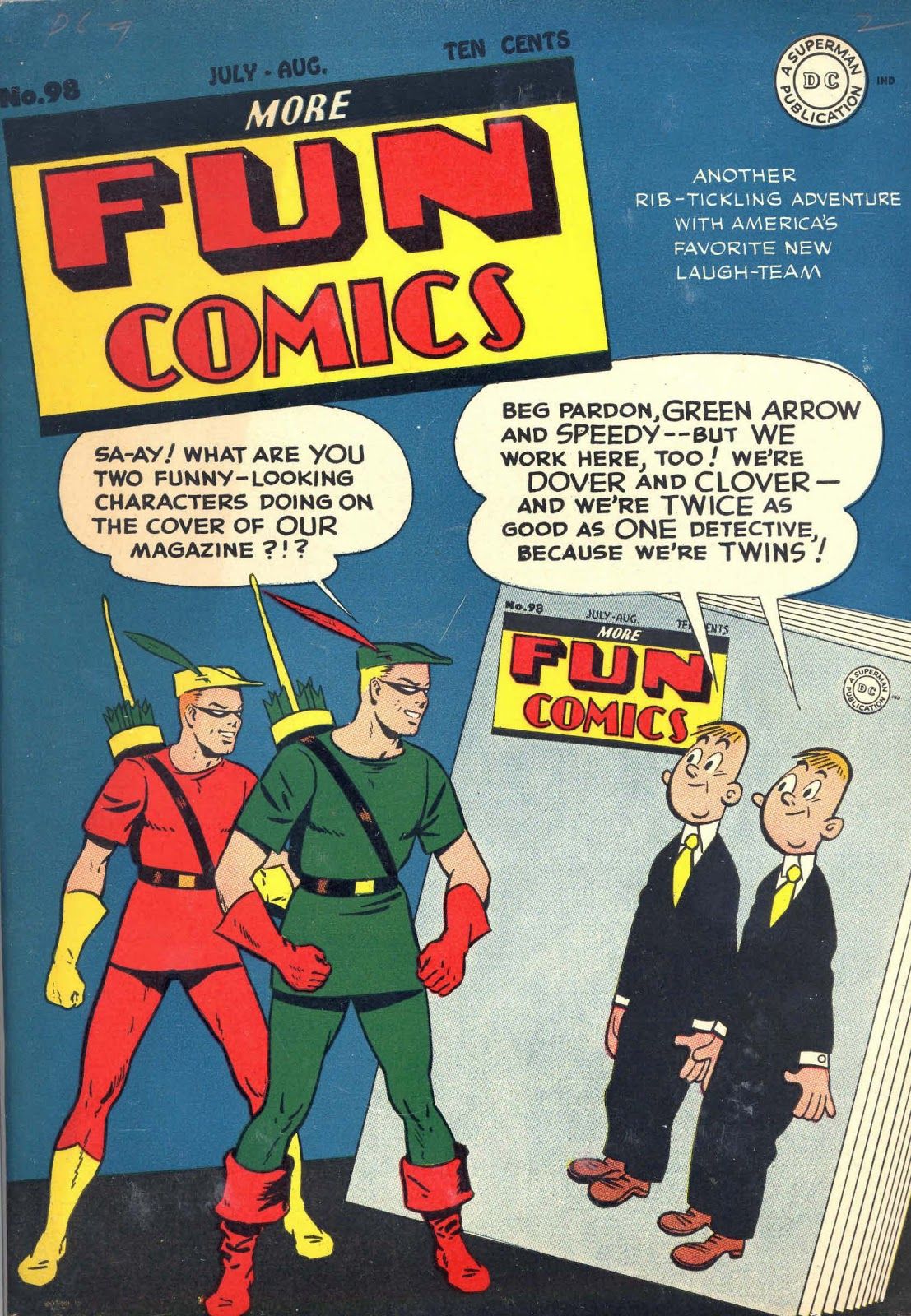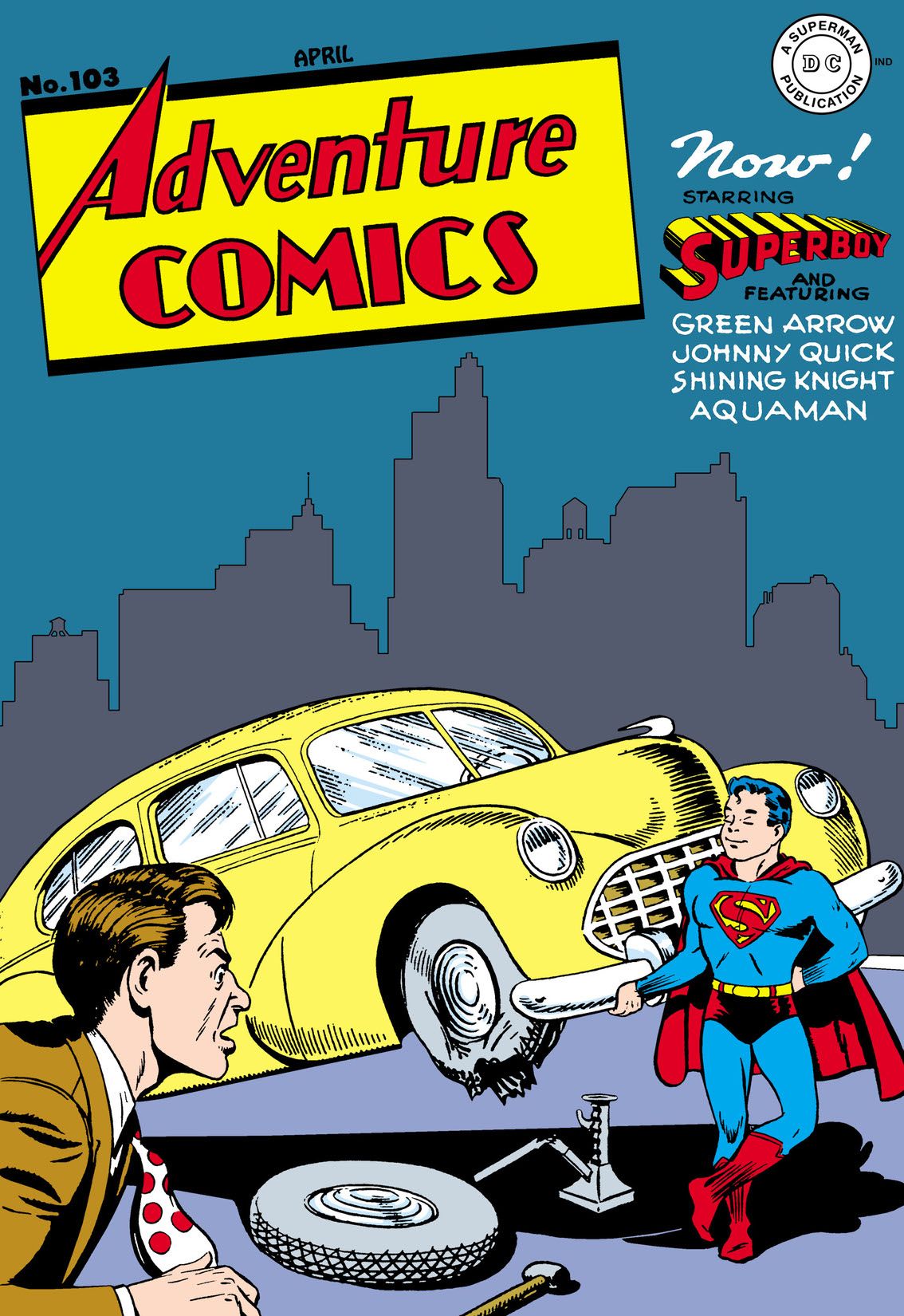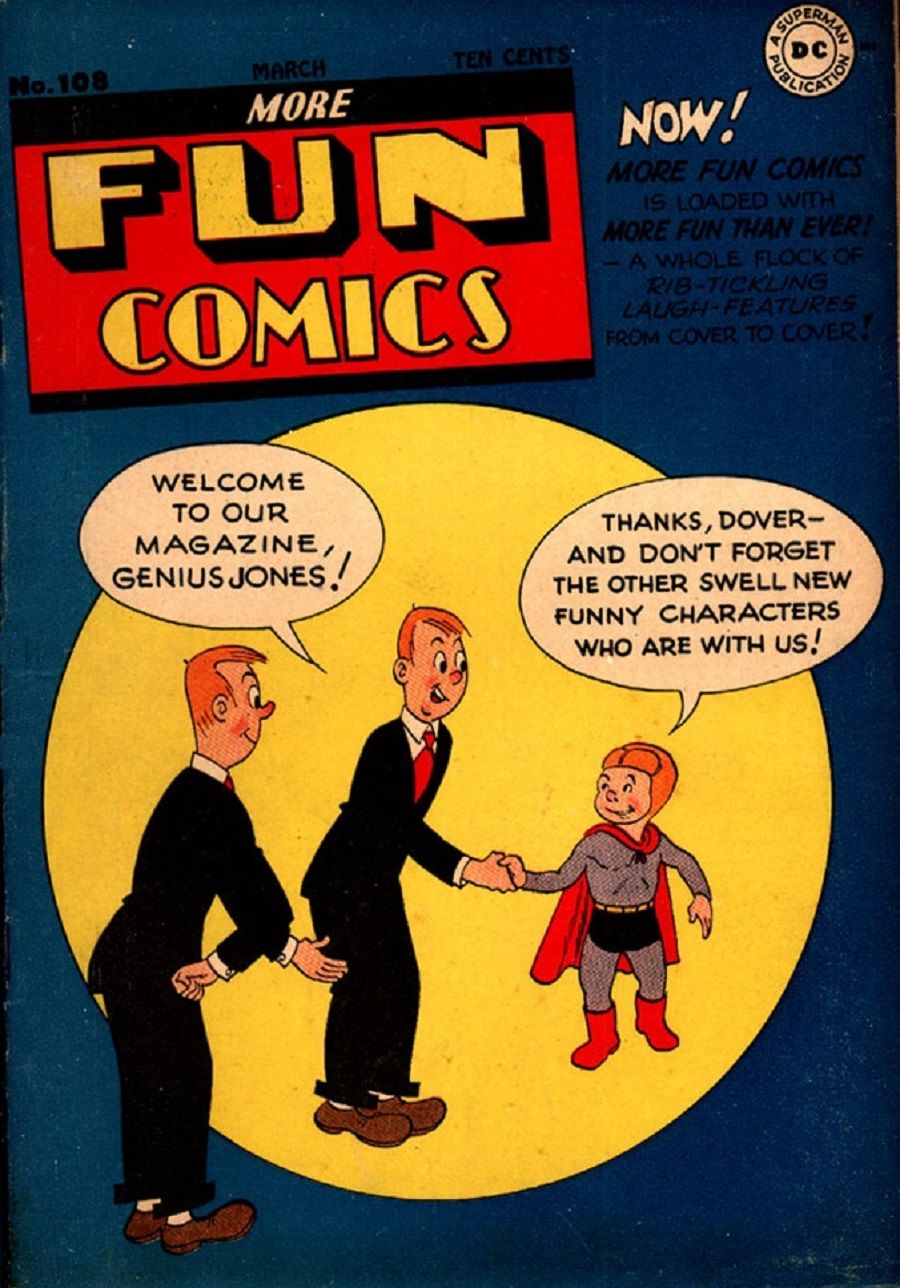This is "Look Back," a feature that I plan to do for at least all of 2020 and possibly beyond that (and possibly forget about in a week, who knows?). The concept is that every week (I'll probably be skipping the four fifth weeks in the year, but maybe not) of a month, I will spotlight a single issue of a comic book that came out in the past and talk about that issue (often in terms of a larger scale, like the series overall, etc.). Each week will be a look at a comic book from a different year that came out the same month X amount of years ago. The first week of the month looks at a book that came out this month ten years ago. The second week looks at a book that came out this month 25 years ago. The third week looks at a book that came out this month 50 years ago. The fourth week looks at a book that came out this month 75 years ago. The occasional fifth week looks at books from 20/30/40/60/70/80 years ago.
Today, we go back to February 1946 for an unusual situation that DC pulled off with two of their longest running series.
The company that we now called DC essentially goes back to 1935 and the publication of New Fun: The Big Comic Magazine, also known as New Fun Comics. That series was the first American comic book series to feature all original material. This was the big innovation by Major Malcolm Wheeler-Nicholson and it obviously changed comic books forever. However, unfortunately for Wheeler-Nicholson, his innovation didn't really start REALLY paying off until he had been pushed out of his own company right before the publication of Action Comics #1, which, you know, did pretty well. The second comic book that Wheeler-Nicholson put out was called New Comics. Both comics were true anthologies. There was nothing really connecting any of the stories. Just whatever seemed interesting. Adventure, comedy, it'd be all thrown together. It wasn't until Detective Comics in 1936 that the company came up with a true themed comic.
However, over time, New Fun was changed to More Fun Comics and New Comics was changed to New Adventure Comics and then finally Adventure Comics. In the early 1940s, though, superheroes sort of blew up the entire CONCEPT of themed anthologies as they were so big that every comic book had superheroes in them, whether it made sense or not, so More Fun Comics and Adventure Comics both became mostly superhero comics, with Adventure Comics having Sandman, Hourman and Starman and More Fun Comics had Spectre, Doctor Fate, Aquaman and Green Arrow.
The issue is that these anthologies were so big there was always room for other types of strips and when a comedy strip became popular, what do you do? I've written about Genius Jones before, a popular feature in Adventure Comics, and look at how it was worked into the cover of an issue of Adventure Comics that was otherwise about the Jack Kirby and Joe Simon revamped Sandman...
Crazy, right?
You would see a similar situation in More Fun Comics, where the humor feature, Dover and Clover (about a pair of twins) began to share the covers of the series with the superheroes like Green Arrow and Speedy. That same issue was the last one that featured Doctor Fate in it...
You see, as World War II came to an end, superhero features were dropping in popularity a lot. Hourman had already ended as a feature in 1934, but 1944 saw Doctor Fate conclude and then 1945 saw the Spectre draw to a close. Things got weirder, though, when Superboy was added to the pages of More Fun Comics. It was obviously a popular feature, but so was Dover and Clover! So they would share covers, but obviously someone at National didn't think that that made sense, so in January into February, National came up with the novel idea of just having More Fun Comics and Adventure Comics, in effect, SWAP TITLES! More Fun Comics had five regular action features - Superboy, Green Arrrow, Aquaman, Johnny Quick and Mike Gibbs, Guerrilla. The first four all moved from More Comics to Adventure Comics in February 1946.
Shining Knight, an existing Adventure Comics feature, remained in the comic, but Sandman and Starman both got the boot.
A few weeks before Adventure Comics #103, More Fun Comics #108 came out, with Genius Jones moving over to the series and Dover and Clover welcoming their new friend...
The rest of the series was filled with new humor strips, like The Gas House Gang (which I believe made one appearance before this one), Curly's Cafe, "Cabbie" Casey, Rusty (an old National humor strip), Windy and my favorite, Cunnel Mustard (basically a Southern Colonel, just pronounced Cunnel). The switchover worked well enough, with More Fun Comics' new format lasting for two more years. Adventure Comics, though, lasted well into the 1980s, so I guess it worked out the best, and it is the reason why Green Arrow and Aquaman became the most prominent of the low-level characters who lasted throughout the Golden Age AND the Silver Age.
If you folks have any suggestions for March (or any other later months) 2011, 1996, 1971 and 1946 comic books for me to spotlight, drop me a line at brianc@cbr.com! Here is the guide, though, for the cover dates of books so that you can make suggestions for books that actually came out in the correct month. Generally speaking, the traditional amount of time between the cover date and the release date of a comic book throughout most of comic history has been two months (it was three months at times, but not during the times we're discussing here). So the comic books will have a cover date that is two months ahead of the actual release date (so October for a book that came out in August). Obviously, it is easier to tell when a book from 10 years ago was released, since there was internet coverage of books back then.

